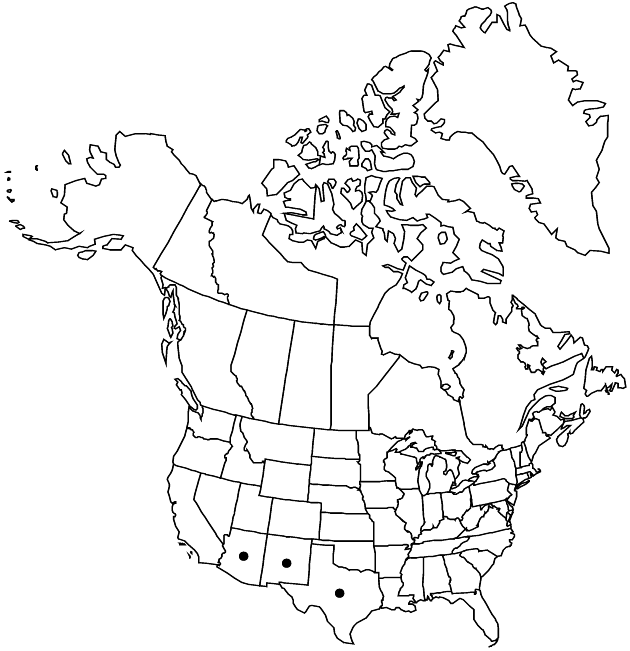Viguiera cordifolia
Smithsonian Contr. Knowl. 3(5): 107. 1852.
Common names: Heartleaf goldeneye
Treatment appears in FNA Volume 21. Treatment on page 173.
Revision as of 20:37, 16 December 2019 by FNA>Volume Importer
Perennials, 50–100 cm. Leaves opposite (proximal) or alternate (distal); petioles 1–8 mm; blades ovate to deltate-ovate or lanceolate (distal), 2–10 × 1.3–7 cm, margins serrate or serrulate, faces strigose. Heads borne singly or 2–9 in ± corymbiform arrays. Peduncles 1–15 cm. Involucres 11–15 × 7–15 mm. Phyllary apices gradually narrowed. Paleae 8–11 mm, apices acuminate, shortly cuspidate. Ray florets 6–8; tubes 1.5–2 mm, laminae 9–19 mm. Disc florets 40+; corollas 5.5–6.6 mm (staminal filaments glabrous). Cypselae 5–6.5 mm, ± strigose; pappi of 2 lacerate, aristate scales 5–5.5 mm plus 2–4 lacerate scales 0.5–1.3 mm. 2n = 34.
Phenology: Flowering Jul–Sep.
Habitat: Dry slopes and canyons, mostly pine forests and limestone soils
Elevation: 1300–2700 m
Distribution

Ariz., N.Mex., Tex., Mexico.
Discussion
Selected References
None.
Lower Taxa
None.